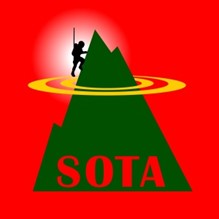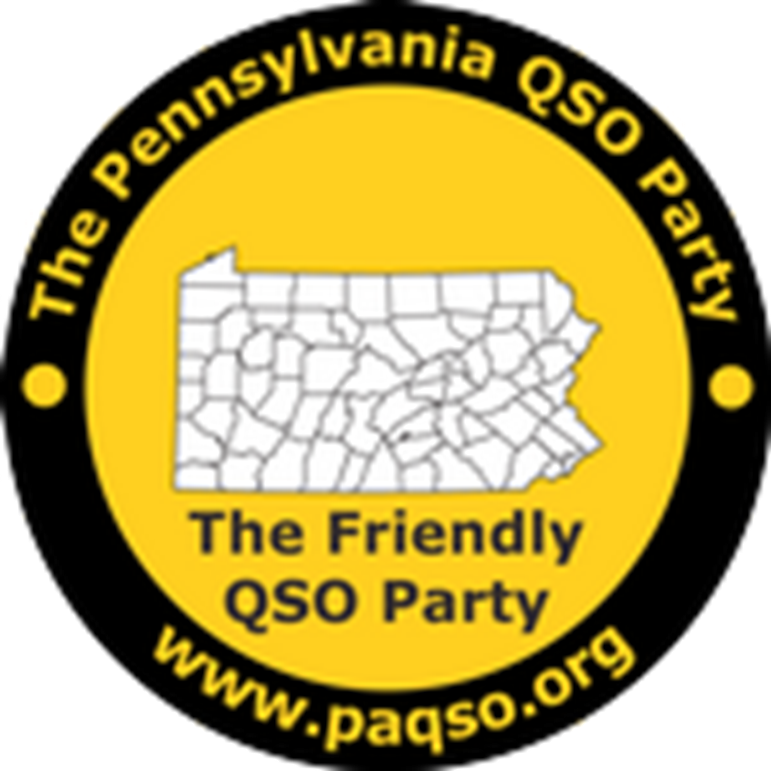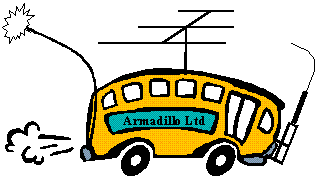Once you get your Technician license, the next step is the General. Congratulations, you just earned access to almost every HF frequency amateurs have! (Techs, you have some 10 meter phone access and all of the Novice CW privileges so don’t feel too left out of this article.) What are you going to do with those new privileges? Before you put up that dipole and press the mike switch, read on.
How to Get Used to HF
The first thing you’ll notice is that the HF bands sound a lot different. Since the HF bands are not channelized (operating on predetermined fixed frequencies), you will experience the flexibility that is almost unique to amateur radio. That “big knob” on an HF radio gets used a LOT! Flexibility is key to making good use of our allocations. You can tune around to find other stations or you can tune around to avoid them—it’s your choice.
The next thing (or maybe the first thing) you’ll notice is there is more noise on HF if you are using the analog modes of SSB or CW or RTTY (radioteletype). The lower the frequency, the higher the atmospheric and human-created noise. (Digital modes cope with noise differently and that is discussed in other articles.) Plus, you’ll hear a lot of usually-weak whistles and warbles from nearby appliances and computers.
Are these bugs or features? Either way, you’ll need to learn some new skills. You’ll need to learn how to adjust your operating frequency and use your radio’s filtering to reject interference from other stations on nearby frequencies. You’ll need to learn how the timing of a QSO works on these modes, just like you had to learn how to make contacts on a repeater. Finally, you’ll need to start training your ears to copy signals when noise is present. These three things, all at once, are stressful to a new operator. What to do?
Just Like Physical Exercise—Radiosport Fun
Remember when you learned to, say, ride a bike, excel at a video game, or throw a Frisbee? At first, the results were skinned knees, a lot of “game over” frustration, and chasing after the disc. Playing a musical instrument was kind of sucky at first, wasn’t it? But with practice, you got better and better. After all, how do you get to Carnegie Hall, goes the old joke—practice, practice, practice! For ham radio, it’s also listen, listen, listen! Listen to how other stations operate to learn the ropes and soon you’ll be ready to try.
It really helps if the practice sessions aren’t just repetitious calisthenics. Having fun at the same time that you’re honing a skill and building up some strengths is clearly the best way to go. What does ham radio have along those lines? The best that I’ve found is the wide variety of radiosport activities on the air every day. This includes “paper chasing” of operating awards like Worked All States (WAS) that result in a nice certificate for display. The various “On The Air” programs like Parks On The Air (POTA), Summits On The Air (SOTA), World Wide Flora and Fauna, or the oldest—Islands On The Air (IOTA)—give you something to work on every time you turn the radio on.

More focused than earning operating awards are the many “contests” that are mostly on weekends but increasingly occur through the week in short bursts. What is a radio contest? Basically, it’s like an award program but during a fixed period of a few hours to a couple of days. The idea is to make as many QSOs as possible according to the rules and maximize your score through various incentives, usually referred to as “multipliers.” QSOs in contests count toward the operating awards, too, so you can accomplish two things at once! Well, three things, actually, since you’re building up your operating skills with each contact.
State QSO Parties—Just Right!
Which contests should you try? There are all sorts of contests—how do you find out when they occur, on what frequencies, and what are the ways to figure out your score? Luckily there are great online resources for you to find them. After all, the contest sponsors would very much like you to participate! I’d start with contestcalendar.com, maintained by Bruce Horn, WA7BNM. On his comprehensive site you’ll find hundreds of contests throughout the year. Each listing summarizes the basic rules and provides a link to the sponsor’s website for detailed information that often includes awards and results from previous events.
Should you start out by picking a big contest, thinking you’ll find lots of stations to work? Maybe the CQ World Wide Phone contest—the biggest of all with thousands of stations on the air? How about the ARRL November Sweepstakes with its interesting exchange and strong signals? You’ll sure hear a lot of stations, but trying to work them through all the hubbub can be an exercise in frustration for smaller stations and new operators. Jumping into the “worldwide” or “sweeps” can leave you feeling like you tried to surf in a blender set on frappe!
How about something a little less allegro and a little more adagio? In between weekends of the “Big Ones” you will notice listings for State QSO Parties, such as the Minnesota QSO Party or the Mississippi QSO Party. The Canadian provinces have their own QSO parties, too. Some even have interesting names like the Washington State Salmon Run or the Texas Armadillo Run. There is one for just about every single state either by themselves or in groups. If you are patient, you can find all fifty states on the air for your WAS!


Some are large with dozens of active stations, and some are small with only a few stations on the air at any one time. The bigger the state, the bigger the QSO party is the general rule. California hosts the largest in early October with Florida, Pennsylvania, and Texas close behind. Some states have grouped themselves together to make a bigger contest. Look for the 7QP (7th-district QSO Party) and the NEQP (New England QSO Party) that run at the same time, along with the Indiana and Delaware QSO Parties, to make a full weekend for everyone.
You can find the State QSO Parties in WA7BNM’s calendar or in the ARRL Contest Corral. Just look through the listings until you find one that sounds good. Or you can use the State QSO Parties Calendar for one-stop shopping. Watch your online groups for announcements by a QSO Party sponsoring group. Definitely visit the sponsor website for special activities such as bonus stations, “spelling bee”-style incentives, and even small prizes.
How to Get Started—Equipment and Software
One of the nice things about State QSO Parties is that you don’t need a massive antenna system or high power. These are domestic contests, so a station with modest antennas and 100 watts or even QRP can do quite well. It helps to have a big station, but we’re just getting started.
For equipment, a 100-watt transceiver will do just fine. Like most things on HF, the antenna is key. If you have a backyard dipole or multiband vertical, you’re good to go. If you will be using temporary antennas, consider a basic dipole and focus on its fundamental band. Remember, you’re not concerned so much with winning as you are about learning skills. If you plan on operating mobile or portable, find a good location where you can minimize local noises and use the most efficient antenna setup you can.
Do you need software? No, but it helps! Basic or general-purpose logging programs will often have a contest mode, or you can repurpose a general logging setup to record the necessary information. Simple contest “loggers” like N3FJP’s suite of programs make life easier and are worth the effort to learn. Most software can even be configured to send CW messages. Be sure your software can generate a Cabrillo format file which is what most sponsors prefer. If you decide to log on paper log sheets (a good starter method) you can enter your QSO information into the converter forms at the Cabrillo Web Forms website.
Getting Ready
Before you call anyone, read the rules! Learn what information you’ll need to give the other station and what they’ll be giving you. Let’s assume that you’re going to operate on SSB (CW is similar). Stations in the target state will probably give you a signal report (almost uniformly 59) and some kind of abbreviation for their county or parish. The sponsors will publish a list of county names and their abbreviations on the contest website—find it and print it out so you’ll know what to expect. Log these abbreviations exactly because that’s what the sponsors will look for when checking your log. And make sure you know your own county!
Outside the state, the other station (that’s you) gives the signal report and your state or province’s postal code in return. Be sure to use the right postal code—those are listed on the USPS website if you aren’t sure. The Ms are the most challenging to get right: MA, MD, ME, MI, MN, MO, MS, and MT are all different states! Most of the time, assuming you’re out of state, you won’t work other stations not in the target states but be prepared to work any station calling. A DX station may just give out “DX” and the number of the QSO in the contest.
Be sure to give out information clearly so the other station copies correctly. And you should try to copy correctly what they send. Don’t be afraid to ask for or give out a repeat to get it right. Use standard phonetics and speak clearly, not too hurriedly. Better to be a little slower and copy right the first time. Don’t worry if you think you might have it all correct—the sending station won’t be penalized for your copying errors.
Making a QSO
You’ll probably hear two types of CQs depending on whether the station calling is in the target state or outside and calling stations in the target state. Let’s say you’re in the MQP (one of the M-states, anyway) and tuning around. You hear a station calling CQ MQP—that station is probably in the target state looking for any station since they can work both in-state and out-of-state stations. If you hear a station calling, say, CQ MO (MO = Missouri) then that station is probably outside of MO and is calling for stations that are in MO. This is not a hard-and-fast rule but it’s common enough to start there. If you call and it turns out you can’t actually work that station for points, they’ll either tell you and start CQing again or will just work you and move on—there is no penalty.
This is what you’ll hear from outside the target state:
CQ CQ CQ MQP from NØAX NØAX in Crawford County
You give your call sign just once, using phonetics on phone – Whiskey One Alpha Whiskey
NØAX responds: W1AW you’re 59 in Crawford County
W1AW responds: Thanks, you are 59 in Connecticut
If NØAX didn’t copy the state and asks again, try something like: Connecticut, Charlie Tango (this gives the abbreviation, too)
If you didn’t copy the county and ask for a repeat, NØAX might respond: Crawford County, Charlie Radio Alpha Whiskey (giving the abbreviation the sponsors require)
You can use the NØAX parts if you’re calling CQ from the target state.
Sometimes, a station is on a “county line” and will count for two or even three counties in one QSO. (Four is possible but very rare.) You can generally log these QSOs as two successive contacts in your log, one from each county. The contest rules will help you log those “double multipliers” correctly.
Finally, be sure to send in your log! You’ll need to generate a Cabrillo-formatted log as mentioned previously. Then you either email it to the sponsor (there will be an address in the rules) or upload it via the sponsor’s website. You will usually receive some kind of confirmation that the log was accepted. If there are problems with the log format or data, you may receive a notice that allows you to fix whatever is wrong and resubmit the log. Even logs with a handful of contacts are welcome, plus it is good practice for submitting large logs from major contests later. Then wait for the results and maybe you’ll win a certificate!
State QSO Party Challenge
Chasing the various state contests can become addictive. They are easy-paced fun with one or more happening just about every weekend. In fact, there is a year-long contest-of-contests that includes every one: stateqsoparty.com. You can even get an award for Worked All QSO Parties!

Get On, Get Active, Get Skilled
That’s the point of this article—to get you active on HF, having fun, and developing your operating skills. It will make you better in a public service role, hosting a club net, at Field Day (another great training opportunity), when chasing DX on any band, you name it. Radiosport is ham radio’s personal fitness exerciser, and that’s why it was introduced in the first place back in the 1930s. Like the Karate Kid learned, it’s all about reps: “wax on, wax off” until you know the moves by heart. See you on the bands!

